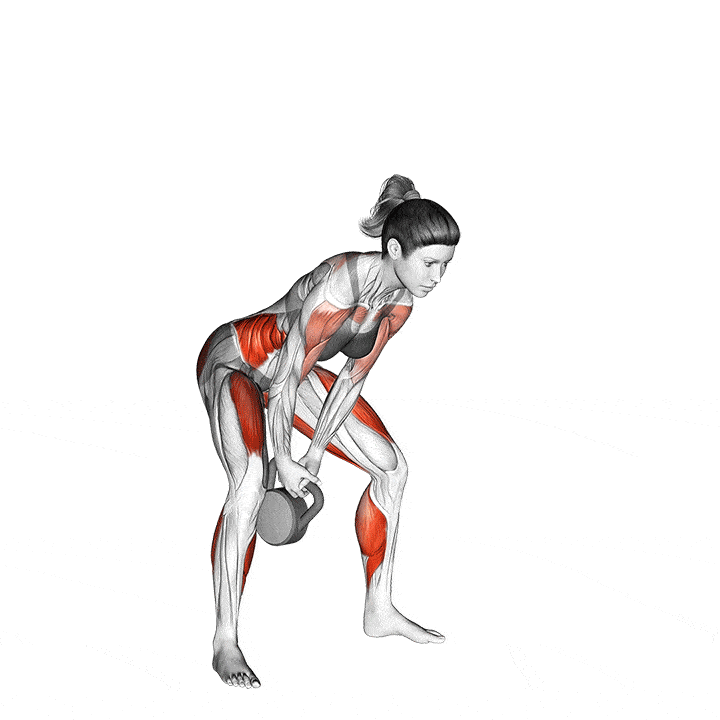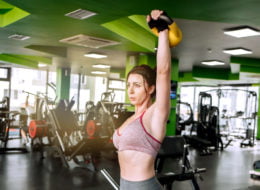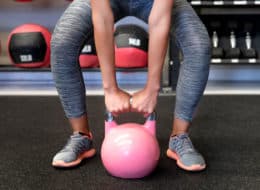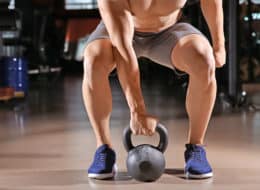kettlebell swings
Kettlebell swings are a hinge pattern movement that improve power through the posterior chain: glutes and hamstrings. The arms aren’t actually lifting the weight up. Instead, it’s the power from the lower body that is swinging the kettlebell out and up.
- DIFFICULTY
- Easy
- Moderate
- Challenging
Which Muscles Are Worked?
How to do kettlebell swings Properly
Step by Step Guide
Begin standing with the feet about hip distance apart and hold one kettlebell in your hands in front of you with the arms straight.
Next, assume a hinge position as you push the hips back, bend the knees slightly, and bring the kettlebell back between and behind the legs. Maintain a neutral spine.
In order to swing the kettlebell, thrust the hips forward, straighten the knees, and allow the kettlebell to raise up to shoulder height while keeping the arms straight.
As the kettlebell lowers back down, use control and re-assume the hinge position.
Repeat for the desired repetitions.
Common Mistakes
A common mistake is using the arms to move the kettlebell instead of power from your lower body. The kettlebell swing is meant to target the hip extensor muscles which include the glutes and hamstrings. In order to propel the kettlebell forward, you want to stand upright, extend the hips, and thrust the hips forward. Use that momentum to glide the kettlebell up into the air. Avoid using the shoulder muscles themselves to lift the kettlebell up.
Animation

Related Workouts

Kettlebell Arnold press
View Workout
Kettlebell bent-over rows
View Workout
Kettlebell chest press
View Workout
Kettlebell deadlifts
View Workout
Kettlebell goblet squats
View Workout
Kettlebell one arm clean and jerk
View Workout
Kettlebell one arm snatch
View Workout